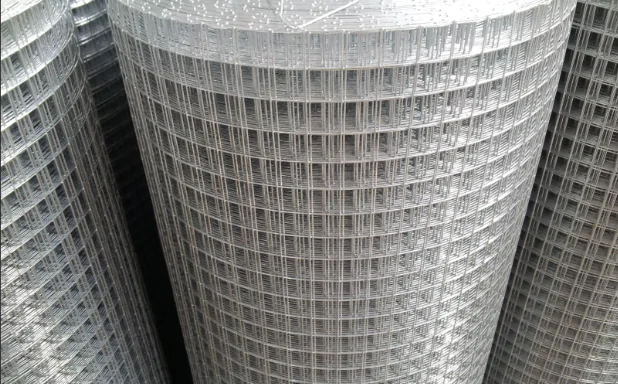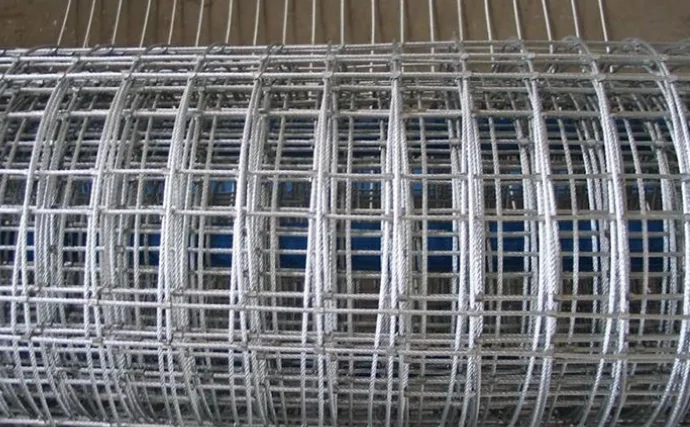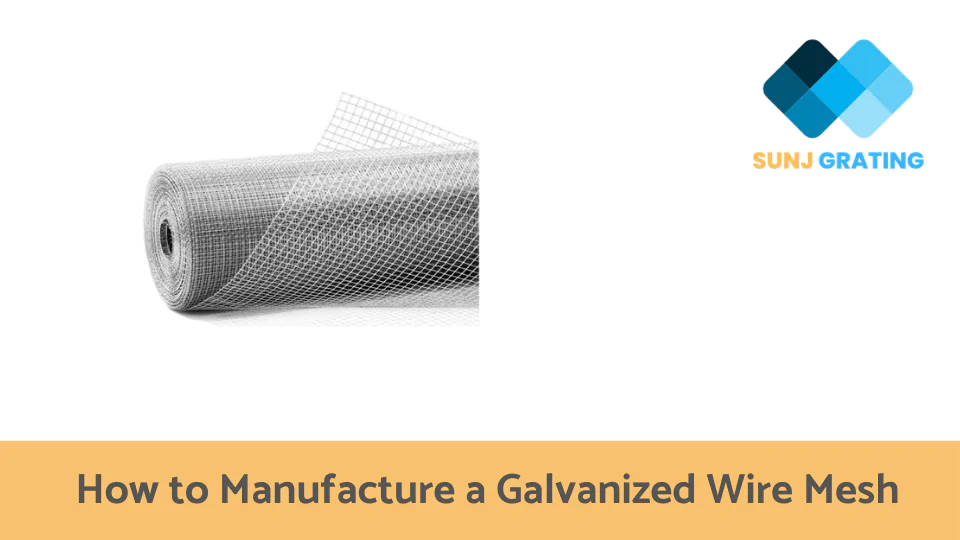Introduction
Galvanized wire mesh is a popular material used in a wide range of industries due to its durability, strength, and resistance to corrosion. In this article, we will explore the manufacturing process of galvanized wire mesh, including the weaving, welding, and galvanizing techniques used to produce this versatile material.
Whether you are involved in construction, agriculture, or manufacturing, understanding the manufacturing process of galvanized wire mesh can help you make informed decisions about which material to use for your specific application.
Read on to discover the benefits of galvanized wire mesh and how it can be used in a variety of industries.
1. What is a galvanized wire mesh

Galvanized wire mesh is a type of mesh made from galvanized steel wire that has been coated with a layer of zinc. The process of galvanization involves applying a protective coating of zinc to the steel wire to prevent it from rusting, corroding, or weakening over time. This makes galvanized wire mesh an ideal material for use in a wide range of applications, including construction, agriculture, and manufacturing.
Features
Galvanized wire mesh is known for its durability and resistance to environmental factors such as moisture and corrosion. The zinc coating acts as a barrier between the steel wire and the environment, preventing rust and corrosion from forming on the surface of the wire.
This makes galvanized wire mesh a long-lasting and low-maintenance material that can withstand exposure to harsh weather conditions, chemicals, and other environmental factors.
Construction
Galvanized wire mesh is constructed by weaving or welding galvanized steel wires together to form a patterned mesh structure. The wire mesh can be made in a variety of patterns and sizes to suit different applications, and can be cut to size or shaped to fit specific requirements.
Galvanized wire mesh is also available in different gauges or thicknesses of wire, with heavier gauges being stronger and more durable than lighter gauges.

Function
Galvanized wire mesh is used in a wide range of applications due to its strength, durability, and resistance to environmental factors. Some common uses for galvanized wire mesh include:
- Fencing
Galvanized wire mesh is commonly used for fencing applications, including garden fencing, animal enclosures, and security fencing. The wire mesh can be woven into a variety of patterns to create a strong and durable fence that is resistant to corrosion and rust.
- Construction
Galvanized wire mesh is used in construction applications, such as reinforcing concrete structures and creating barriers for retaining walls. The wire mesh can be used to add strength and stability to concrete structures, or to create a barrier that prevents soil erosion and other environmental damage.
- Agriculture
Galvanized wire mesh is commonly used in agricultural applications, including animal cages, bird feeders, and garden trellises. The wire mesh is strong and durable, making it ideal for use in outdoor environments where it may be exposed to harsh weather conditions.
- Manufacturing
Galvanized wire mesh is used in a variety of manufacturing applications, including machine guards, filters, and screens. The wire mesh can be woven or welded into different patterns and sizes to suit specific manufacturing requirements and is resistant to corrosion and rust.
2. The manufacturing process of galvanized wire mesh

The manufacturing process of galvanized wire mesh involves several steps, including weaving, welding, and galvanizing. Each of these steps is important in producing a high-quality, durable wire mesh product. Below is a step-by-step guide to the manufacturing process of galvanized wire mesh:
Wire Drawing
The first step in manufacturing galvanized wire mesh is wire drawing. This involves pulling steel wire through a series of dies to reduce its diameter to the desired size. The wire is then wound onto spools for use in the next step.
Weaving
The second step in the process is weaving. This involves interlocking the steel wires to create a mesh pattern. The wire is fed through a weaving machine that interlocks the wires to form the desired mesh pattern. Weaving machines can be configured to create a variety of mesh patterns, including square, rectangular, and diamond shapes.
Welding
Welding is an alternative method of creating wire mesh, which involves fusing individual wires together at their intersection points to create a solid mesh structure. This process is typically used for creating wire mesh products with a higher tensile strength, such as those used in heavy-duty applications.
Galvanizing
Once the wire mesh has been woven or welded, it is then galvanized. This involves coating the mesh with a layer of zinc to protect it from corrosion and rust. The mesh is dipped into a molten zinc bath, which coats the entire surface of the wire mesh with a layer of zinc. The mesh is then cooled and inspected to ensure that the coating is uniform and adheres to the wire mesh.
Cutting and Finishing
The final step in the process is cutting and finishing. The wire mesh is cut to the desired size and shape, and any excess material is trimmed away. The edges of the wire mesh are then finished to ensure that they are smooth and free of any sharp or rough edges that could cause injury.
3. Benefits of galvanized wire mesh

Durability
Galvanized wire mesh is highly durable and resistant to corrosion, rust, and other environmental factors. This makes it a long-lasting material that requires little maintenance over time.
Strength
Galvanized wire mesh is strong and resistant to impact or damage. It can withstand heavy loads and is difficult to cut or break, making it an ideal material for fencing or other security applications.
Versatility
Galvanized wire mesh can be used in a wide range of applications, from animal enclosures and garden fencing to machine guards and screens. It can be woven or welded into a variety of patterns and sizes to suit specific requirements.
Cost-effective
Galvanized wire mesh is a cost-effective material, particularly when compared to other types of metal fencing or mesh. It is also less expensive than some other materials, such as wood or PVC.
Easy to install
Galvanized wire mesh is easy to install, especially when compared to other types of fencing materials. It can be cut to size and shaped to fit specific requirements, and can be easily attached to existing structures or posts.
Environmentally friendly
Galvanized wire mesh is an environmentally friendly material, as it can be recycled and reused. It is also resistant to environmental factors such as moisture and UV rays, which helps to reduce the need for replacements or repairs over time.
Conclusion
Galvanized wire mesh is a versatile and durable material that is used in a variety of applications, from construction to agriculture. Understanding the manufacturing process of galvanized wire mesh can help you make informed decisions about which material to use for your specific needs.
Whether you’re a professional or a DIY enthusiast, this article will provide you with valuable insights into the manufacturing process of galvanized wire mesh.


